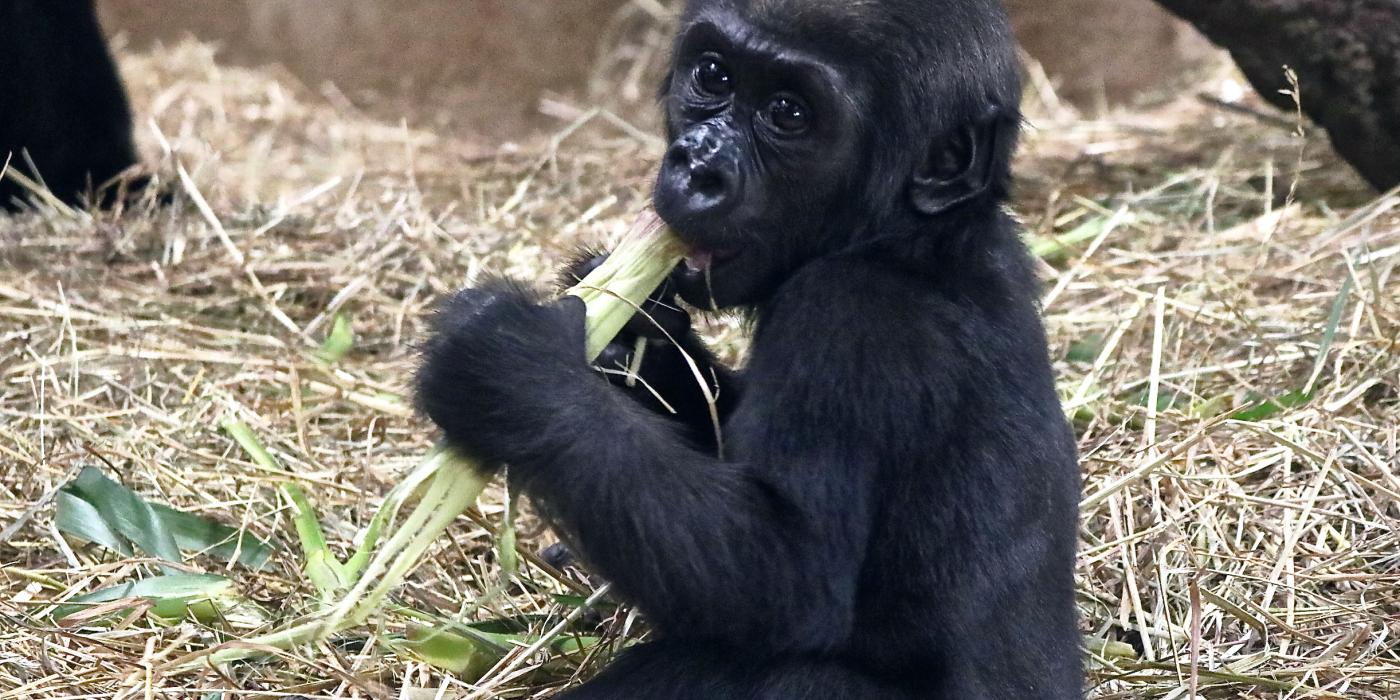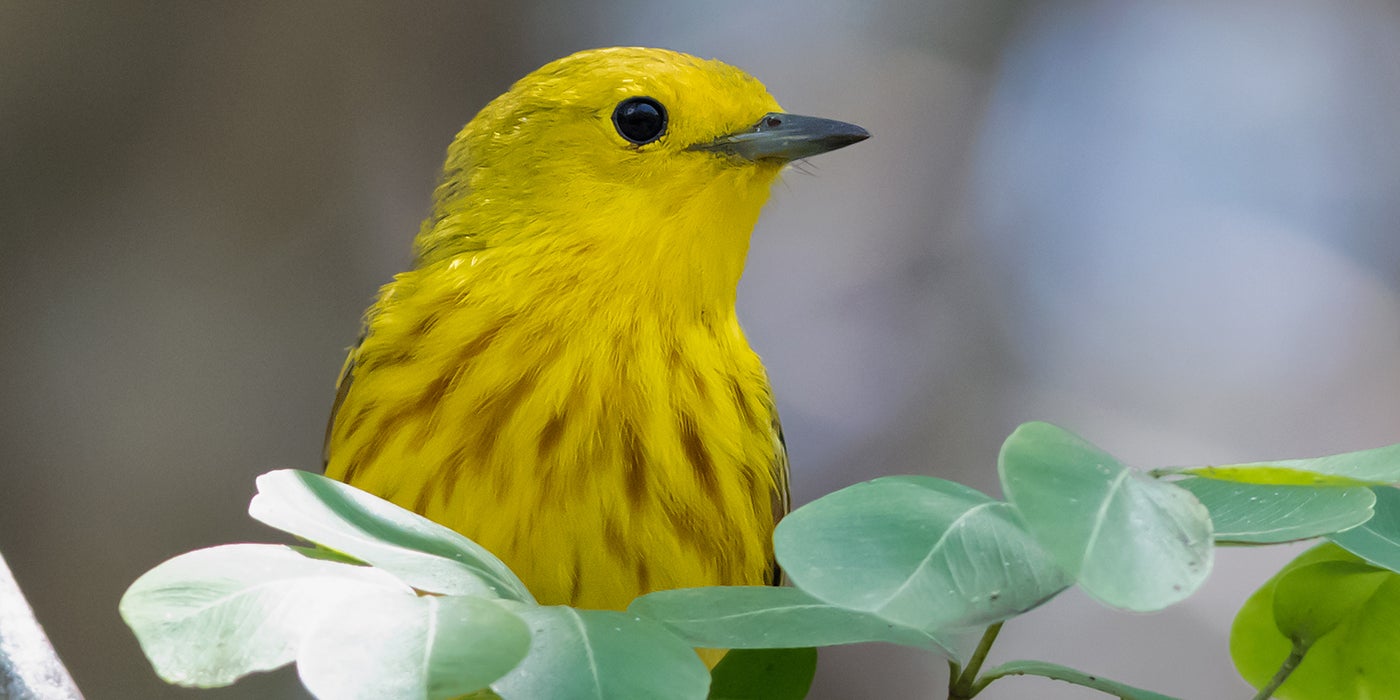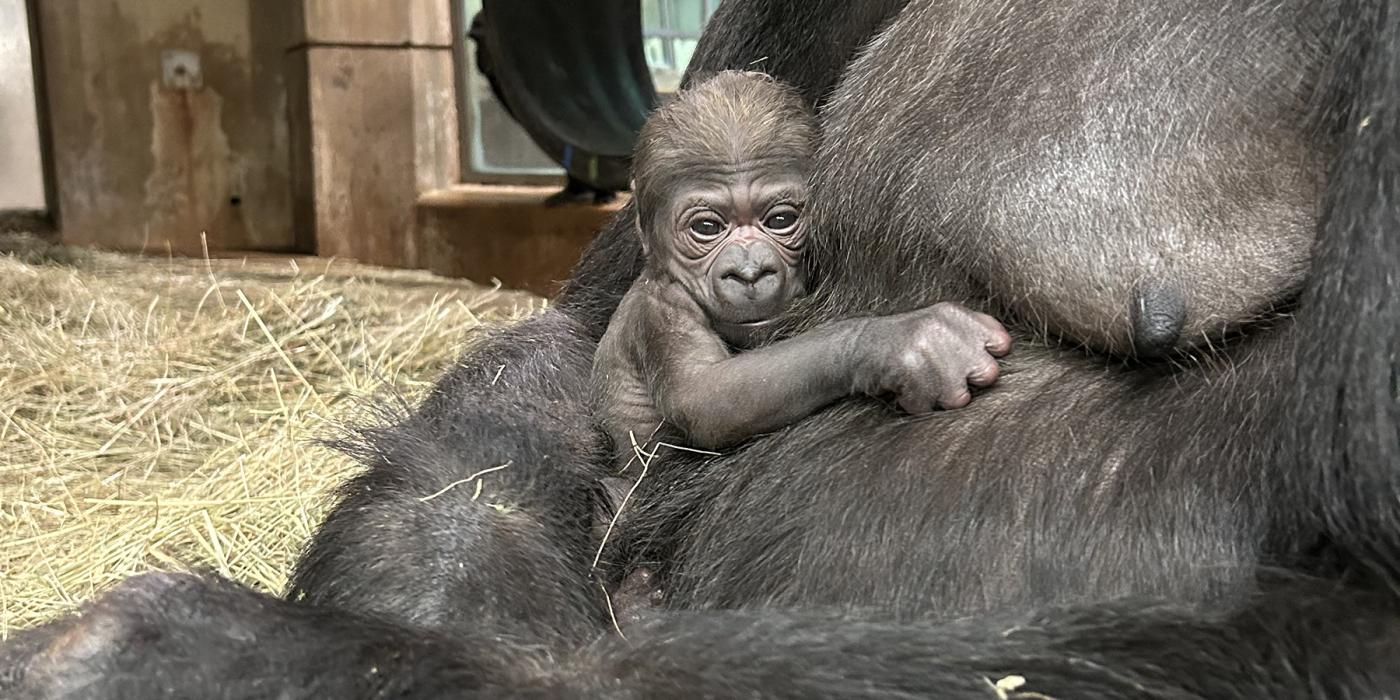#GorillaStory: ‘Big Boy’ Moke

This update was written by primate keeper Melba Brown.
Western lowland gorilla infant Moke is growing bigger and stronger by the day. His movements are more fluid now, and he is able to walk without too much of a wobble.
His mother, Calaya, has clearly taken note of this. During a recent group encounter, Calaya approached Kibibi and followed her into another enclosure, leaving Moke unattended. I watched Moke to see what his reaction would be. He turned and looked at the area where Calaya and Kibibi went. After less than a minute, Calaya returned to collect Moke. It appears that she sees her son as somewhat of a big boy who can handle some minimal time without her.
Moke and Kibibi continue to have frequent play sessions. Last, week, Baraka joined in on the fun. He walked up to his son and gently poked him with one finger, and Moke fell over in a dramatic fashion. Then, Baraka made his way over to Kibibi and poked her with his finger as well. She, like Moke, collapsed in delight. At moments like these, it is easy to see humor among the troop members!




